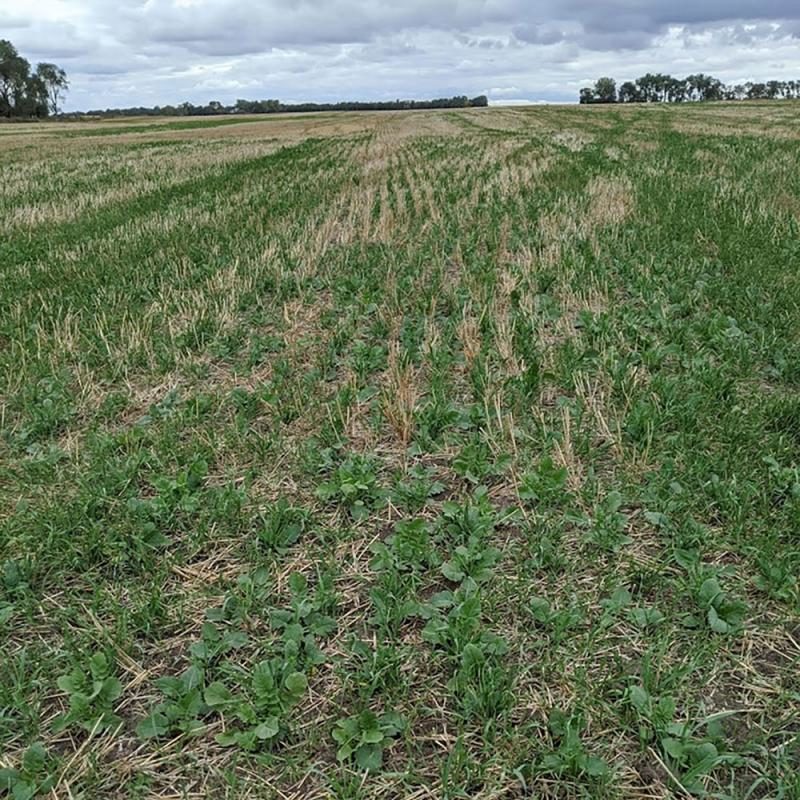By Connie Strunk, SDSU Extension Plant Pathology Field Specialist
With the soybeans being harvested a little earlier than usual this year, some producers are finding themselves making management decisions which often include the use of cover crops. There are a lot of agronomic benefits for planting cover crops such as soil health, soil erosion control, weed reduction, animal feed, and nutrient recycling. For soybean producers dealing with soybean cyst nematode (SCN) in their fields, selection of cover crops is important since some of these can be hosts for SCN.
SCN is the most damaging soybean pest in South Dakota. Once SCN is detected in the field, it is near impossible to eliminate it, but it is a pest that can be managed to minimize yield loss. If a SCN host crop is included in the cover crop mix, SCN can continue to reproduce and accumulate in the soil. These cysts can remain viable for more than ten years in the soil. For these reasons, the use of non-SCN hosts or poor SCN host crops is recommended.
SCN Management
SCN management starts with sampling your soil to determine the presence or absence of this nematode. A positive SCN detection requires adoption of an integrated management approach that includes planting resistant cultivars, crop rotation with non-hosts, and use of nematicide seed treatments especially for fields where SCN egg counts are high (>6,000 eggs/100 cc of soil). A periodic SCN soil test is also needed to monitor the SCN population changes in the field. An increase in SCN numbers would indicate the methods being used are not working efficiently and therefore would call for change in tactics. The SCN test is free of charge to South Dakota soybean producers courtesy of the South Dakota Soybean Research and Promotion Council. Soil samples for SCN test can mailed or dropped off at the SDSU Plant Diagnostic Clinic. Make sure to download and fill out the SCN Soil Sampling Information Sheet to accompany your samples before submitting them for analysis.
Cover Crop Options
Legumes that supported moderate levels of SCN as a host:
- Lupine (white)
- Field pea
- Forage pea
Nitrogen Fixing Legumes that are poor SCN hosts or are non-SCN host crops:
- Alfalfa
- Austrian winter pea
- Berseem clover
- Cowpea
- Crimson clover
- Hairy vetch
- Red clover
- White clover
Grasses and cereal grains that are poor SCN hosts or non-SCN host crops:
- Annual ryegrass
- Barley
- Cereal rye
- Oats
- Wheat
Brassicas that are poor SCN hosts or non-SCN hosts:
- Canola
- Daikon-type radish
- Mustard
- Oilseed radish






